Oh My Damn
Oh my damn

Twix Cake
More Posts from Ohyeaman and Others
Save for later










Destino: A Salvador Dalí + Walt Disney Collaboration Circa 1945
By: Maria Popova
WATCH THE VIDEO after this text:
‘A magical display of the problem of life in the labyrinth of time.’
After last week’s discovery of Salvador Dalí’s little-known 1969 Alice in Wonderland illustrations, I followed the rabbit hole to another confluence of creative culture titans. In 1945, Dalí and Walt Disney embarked upon a formidable collaboration — to create a six-minute sequence combining animation with live dancers, in the process inventing a new animation technique inspired by Freud’s work of Freud on the unconscious mind and the hidden images with double meaning. The film, titled Destino, tells the tragic love story of Chronos, the personification of time, who falls in love with a mortal woman as the two float across the surrealist landscapes of Dalí’s paintings. The poetic, wordless animation features a score by Mexican composer Armando Dominguez performed by Dora Luz.
As fascinating as the film itself is the juxtaposition of the two creative geniuses behind it, each bringing his own life-lens to the project — Dalí described the film as “A magical display of the problem of life in the labyrinth of time” and Disney called it “A simple story about a young girl in search of true love.” Source:mentalfloss









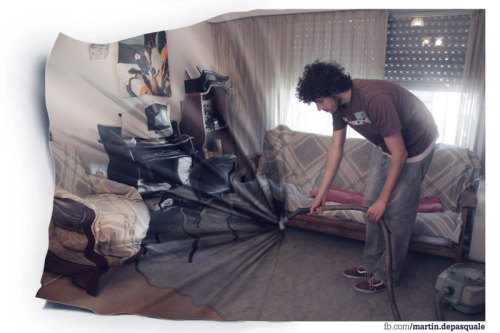
Impressive Surreal Photography by Martín De Pasquale
on Behance
A sample of the amazing images created by Martín De Pasquale, digital retouching genius based in Buenos Aires, Argentina.
Source:boingboing
Literally what I feel like doing sometimes. Especially when this songs in my head.










HE DID THE THING. HE DID A THOUSAND MILES.





Fandumb #93: Darwinian Poke Evolution
This is a non-profit parody.
Updates Tuesdays and Thursdays.
Deviantart deviantfart.

Robert McCall
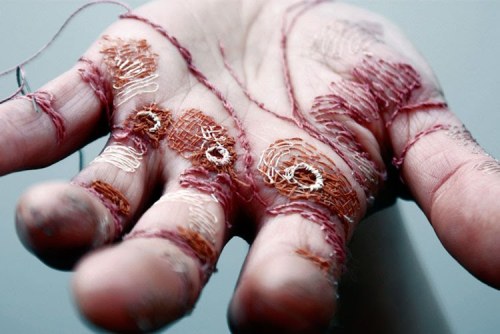
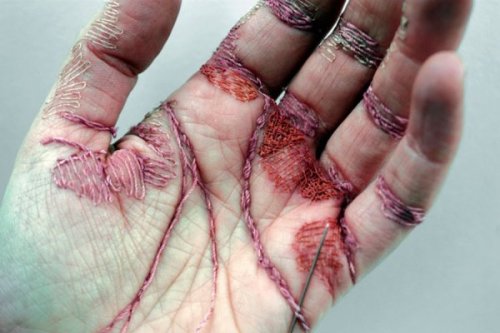
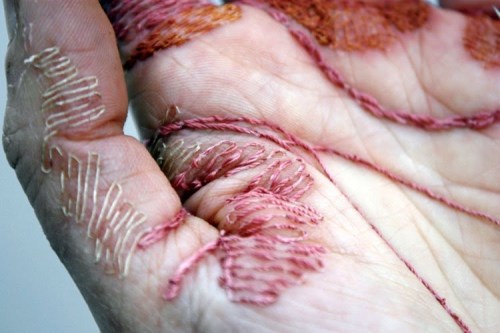
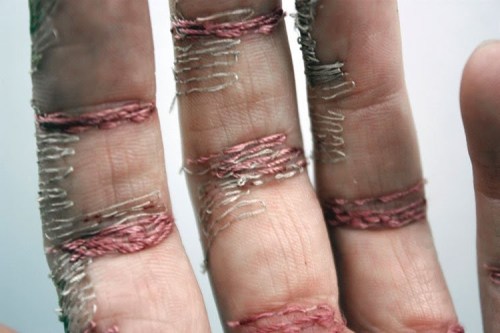
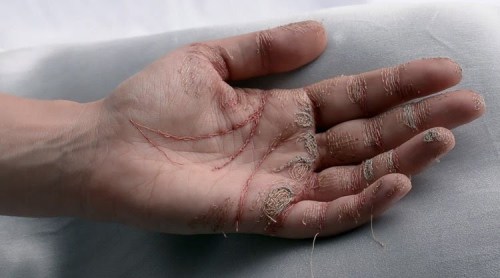
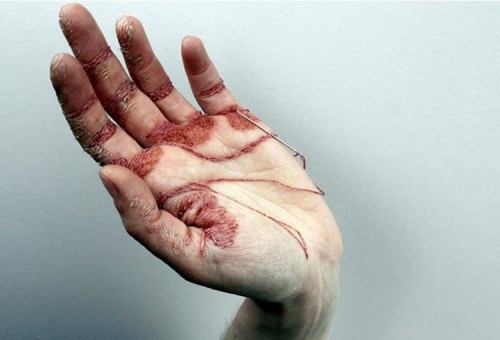
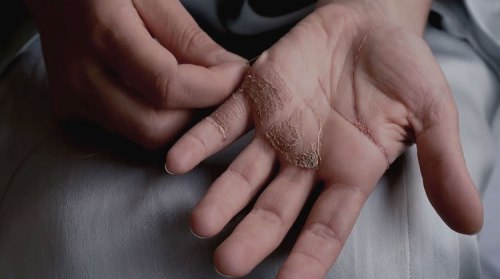
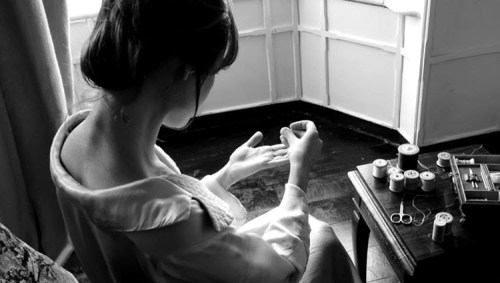
A Woman’s Work Is Never Done by Eliza Bennett
“A series of photographic works titled ‘A Woman’s Work is Never Done’ Using my own hand as a base material, I considered it a canvas upon which I stitched into the top layer of skin using thread to create the appearance of an incredibly work worn hand. By using the technique of embroidery, which is traditionally employed to represent femininity and applying it to the expression of its opposite, I hope to challenge the pre-conceived notion that ‘women’s work’ is light and easy. Aiming to represent the effects of hard work arising from employment in low paid ‘ancillary’ jobs, such as cleaning, caring and catering, all traditionally considered to be ‘women’s work’.
Source:culturainquieta
-
 burningupastartosaygoodbye reblogged this · 5 months ago
burningupastartosaygoodbye reblogged this · 5 months ago -
 important-kitten liked this · 6 months ago
important-kitten liked this · 6 months ago -
 klaushargreeveses reblogged this · 6 months ago
klaushargreeveses reblogged this · 6 months ago -
 the-ella-kelly liked this · 7 months ago
the-ella-kelly liked this · 7 months ago -
 sugarskies liked this · 7 months ago
sugarskies liked this · 7 months ago -
 klaushargreeveses liked this · 7 months ago
klaushargreeveses liked this · 7 months ago -
 bedwyrssong liked this · 7 months ago
bedwyrssong liked this · 7 months ago -
 bigmelwalter liked this · 7 months ago
bigmelwalter liked this · 7 months ago -
 avocadoberries reblogged this · 2 years ago
avocadoberries reblogged this · 2 years ago -
 milfdollypartonarchive liked this · 3 years ago
milfdollypartonarchive liked this · 3 years ago -
 foodilike reblogged this · 3 years ago
foodilike reblogged this · 3 years ago -
 teenagepiespyfestival liked this · 4 years ago
teenagepiespyfestival liked this · 4 years ago -
 metamorthic reblogged this · 4 years ago
metamorthic reblogged this · 4 years ago -
 letscandyme liked this · 4 years ago
letscandyme liked this · 4 years ago -
 pinkieandthebrain1 liked this · 4 years ago
pinkieandthebrain1 liked this · 4 years ago -
 gratianacristian liked this · 4 years ago
gratianacristian liked this · 4 years ago -
 never-let-that-go-hold-on-that reblogged this · 4 years ago
never-let-that-go-hold-on-that reblogged this · 4 years ago -
 never-let-that-go-hold-on-that liked this · 4 years ago
never-let-that-go-hold-on-that liked this · 4 years ago -
 amossyboi liked this · 4 years ago
amossyboi liked this · 4 years ago -
 commoner64 reblogged this · 4 years ago
commoner64 reblogged this · 4 years ago -
 jessy-ka29 liked this · 4 years ago
jessy-ka29 liked this · 4 years ago -
 sylverquill reblogged this · 4 years ago
sylverquill reblogged this · 4 years ago -
 crownprincessleia reblogged this · 4 years ago
crownprincessleia reblogged this · 4 years ago -
 fannys21 liked this · 4 years ago
fannys21 liked this · 4 years ago -
 luxuriousglamxoxo reblogged this · 4 years ago
luxuriousglamxoxo reblogged this · 4 years ago -
 lacestrawbri reblogged this · 4 years ago
lacestrawbri reblogged this · 4 years ago -
 asterverzen liked this · 4 years ago
asterverzen liked this · 4 years ago -
 blathers liked this · 4 years ago
blathers liked this · 4 years ago -
 nectardew reblogged this · 4 years ago
nectardew reblogged this · 4 years ago -
 freshouttathegape-deux reblogged this · 4 years ago
freshouttathegape-deux reblogged this · 4 years ago -
 fooddawg2020 reblogged this · 4 years ago
fooddawg2020 reblogged this · 4 years ago -
 lovelustlossbiipf liked this · 4 years ago
lovelustlossbiipf liked this · 4 years ago -
 sleepy-skittles liked this · 4 years ago
sleepy-skittles liked this · 4 years ago -
 galwithalibrarycard liked this · 4 years ago
galwithalibrarycard liked this · 4 years ago -
 intothehedgemaze reblogged this · 4 years ago
intothehedgemaze reblogged this · 4 years ago -
 lenny-kosnowski liked this · 4 years ago
lenny-kosnowski liked this · 4 years ago -
 chubby-chestnaught liked this · 4 years ago
chubby-chestnaught liked this · 4 years ago -
 swimmingferret reblogged this · 4 years ago
swimmingferret reblogged this · 4 years ago -
 ghostdrunk liked this · 4 years ago
ghostdrunk liked this · 4 years ago -
 gothamherb liked this · 4 years ago
gothamherb liked this · 4 years ago -
 morningsbird liked this · 4 years ago
morningsbird liked this · 4 years ago -
 wesleyccxx liked this · 4 years ago
wesleyccxx liked this · 4 years ago

